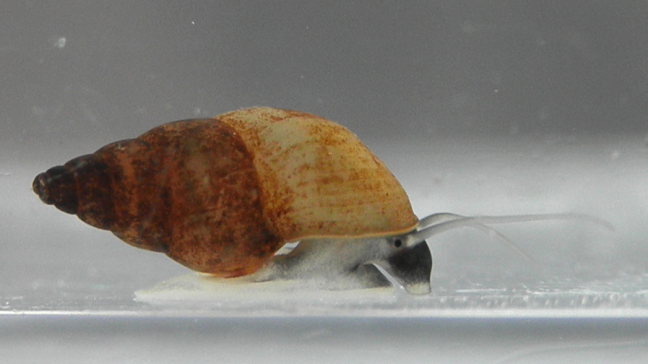Though it takes about 20 of them to cover one side of a penny, the New Zealand mud snail not simply a small problem for Dane County.
Recently discovered in multiple locations in Badger Mill Creek in Dane County, this invasive species competes with smaller fisher for algae and bugs, perhaps causing lasting implications for the river ecosystem. Specifically, the snails compete with insects which are the primary food source of native trout.
Tim Campbell, the aquatic invasive species specialist at the Wisconsin Sea Grant, said snails eat algae and other biomaterials at the bottom of streams.
“They compete with native insects in streams that provide food for really popular game fish like trout,” Campbell said.
These snails can also multiply very fast. Campbell said the highest density ever recorded was around 500,000 per square meter in Yellowstone National Park. As long as there is a stream with a lot of production like algae, the snails can continue to survive.
But Wade Moder, executive director of the Upper Sugar River Watershed Association, said its difficult to determine the impact these snails will have, or how long they will remain in the ecosystem.
“Just because they are there, it doesn’t mean anything will happen,” Moder said. “There are cases where they spring up and then the population drops back down.”
But Moder said there is still cause for concern and there are steps being taken to limit the snails’ spread by educating fishing organizations like Trout Unlimited and Badger Fly Fishers.
Since snails can attach to fishermen’s boats and survive out of water for up to a month, Moder said the Sugar River Watershed Association is building wader watch stations that have three-sided boot brushes to keep the snails from spreading.
Moder said the stations will grab people’s attention. Aside from this, the problem will require a lot of education and signage to make sure people are conscious of the invasive species.
Campbell said the best way to prevent snails from impacting other bodies of water is prevention.
“If every water user in the state inspects, removes, and drains the water and snails from their gear, it should drastically reduce the risk of transporting invasive species,” Campbell said.


